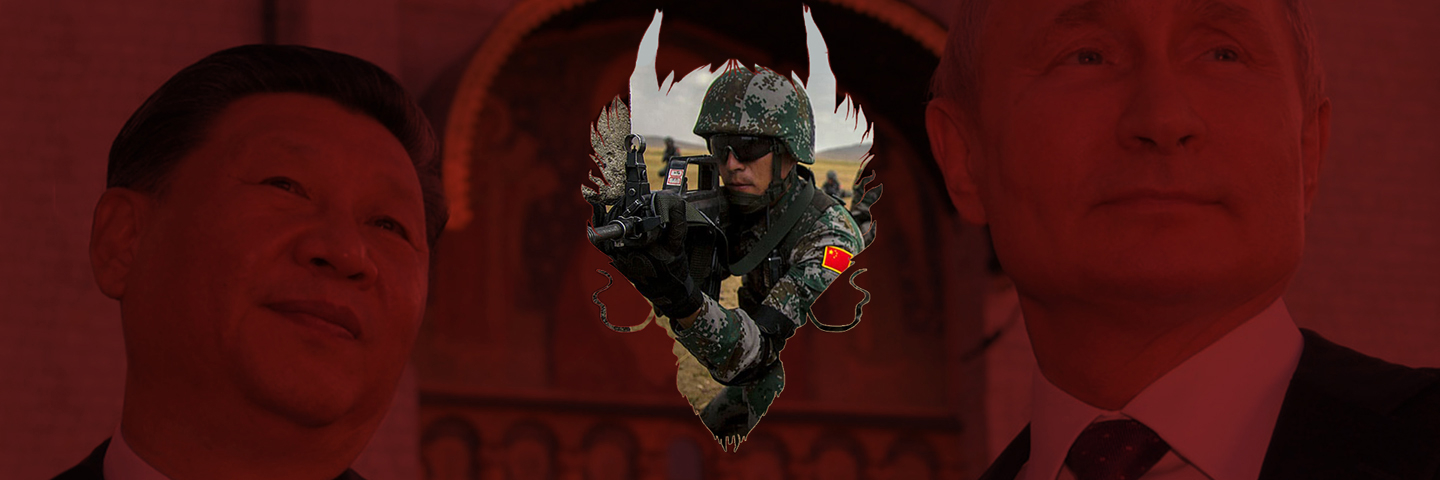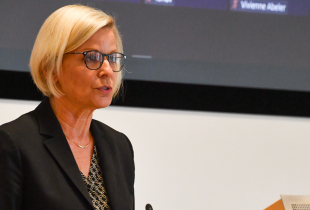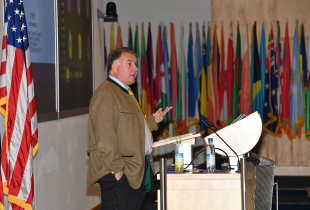
Russian and Chinese Approaches to Stabilizing Afghanistan: Cooperation, Hedging, or Competition?
- What? In a strategic shock, the Taliban in Afghanistan entered Kabul on August 15, 2021, following a cascading compounded crisis triggered by Western military withdrawal, the Ghani government and Afghan National Security Forces (ANSF) appearing unwilling or unable to fight and the Taliban’s will to power.
- So What? Afghanistan will only stabilize if regional powers - Iran, China, Russia, the five Central Asian states, India and Pakistan - engage positively and constructively with an Afghan government that has greatest internal legitimacy. Afghanistan stress-tests the Russia-China functional axis (that is, the entente between the two powers).
- What Now? Shared threats created a cooperative imperative in theory but in practice the Taliban create a dilemma for external actors. However, there are no dual, bilateral, or joint instances of Russia-China cooperation and the SCO has not proved to be a cooperative forum in this respect. Joint approaches are contingent on deciding who leads and have reputational and credibility risks in cases of failure.
- The Taliban’s Trilemma: The Taliban have three policy goals that appear incompatible and pose a trilemma. The Taliban need to: first, uphold their core beliefs which are central to their identity and internal legitimacy while avoiding a civil war in Afghanistan; second, gain external recognition and development assistance but avoid conditionality that might dilute their beliefs/practices; and third, allow foreign fighters and militants who have pledged allegiance to be based in the Islamic Emirate, but not wage global jihad (i.e. have militant groups privilege Taliban beliefs above their own).
- Core Beliefs and Internal Legitimacy: The Taliban seeks recognition of the Islamic Emirate’s statehood to bestow legitimacy and unblock frozen financial support. In March 2021, the World Bank reported that 75% of public spending on basic services financed by external donor grants. In Geneva in November 2020 donors agree one year extension of aid but conditioned on efforts to reduce corruption and poverty. The Taliban has publicised conciliatory messages regarding commitments to human rights and held numerous meetings with foreign and humanitarian delegates and sought to project a sense of normality and security under their rule. The Taliban also suggest that recognition, aid, development and humanitarian assistance are prerequisites for the Taliban to address human rights concerns, and implicitly, not to export opium and small arms, refugees and jihad. However, external assistance may be accompanied by foreign ideological and geopolitical agendas and expectations around expectations of progress and prosperity, posing challenges to the implementation of Taliban core beliefs.
- Global Jihad vs Islamic Emirate: The Taliban seeks to “deglobalize jihad” and, unlike al-Qaeda and IS-K, do not support “offensive jihad.” The Taliban support an Emirate, not a Caliphate. The challenge: how can the Taliban convince the majority of reluctant foreign jihadist militant groups (the CIA identify 13) to step back from global jihad in return for the Taliban allowing their basing in Afghanistan? Some groups may be persuadable, others may need to be physically eliminated. Taliban relations with Tehrik-i-Taliban Pakistan (TTP), or Pakistani Taliban is critical in this respect. This process will create tensions among Taliban commanders and could risk destabilizing.
- Russia and China Approaches:
- Before the Taliban takeover Moscow and Beijing were unified in opposition to US/NATO presence in Afghanistan and Central Asia (CA).
- During the chaotic exit, both were: “happy to see the Americans humiliated because it undermines Washington’s status, thus strengthening their standing internationally.”
- After the takeover, both oppose: Western influence in Afghanistan/CA bases; Afghanistan state collapse and the spillover of refugees, opium/small arms and jihad (cyber radicalization) into CA, Xinjiang and the Caucasus up to the Volga region (the extent of “Khorasan”). Both Russia and China argue for “unfreezing” of financial assets and resumption of UN aid to Afghanistan, while refusing to contribute to the new international efforts (G20 summit organized by Italy).
- Do approaches and interests now gradually diverge?
- Russia has a smaller economic footprint, a geographical buffer between it and Afghanistan, and other higher priorities (e.g. Ukraine, Belarus, the Arctic, and Syria), as well as a military-security role via CSTO and the 201 Military Base in Tajikistan. For these reasons, does Russia need to operate through proxies and does it prefer a Taliban strong enough to impose control, but weak enough to respond to Russian influence?
- China has a larger economic presence, and a core national interests (Xingjian) and for this reason prefers a stable and united Taliban in control of all territory. Both do not want to see themselves on the wrong side of each other in Afghanistan, with a “Taliban 2.0” (China, Pakistan ... Turkmenistan and Uzbekistan?) against a “Northern Alliance 2.0” (India, Iran, Russia, Tajikistan ... and Kazakhstan and Kyrgyzstan?). Both Russia and China avoid having to choose by avoiding a civil war in Afghanistan, which suggests both look to consolidate Taliban government.
- Reality is more complex.
- In Moscow understanding has shifted with the realization that the Taliban are not united and in control but rather a civil war is still possible, that the U.S. has left “controlled chaos” and that Russia and other neighbors have limited means to influence the Taliban. Security services and siloviki identify an increased threat to Russia and Russian military planners are keen to avoid overstretch: investment in Afghanistan demands prioritization and disinvestment elsewhere. Russia recognizes that it has the role of security-provider but lacks the capacity to deliver. The Moscow Format conference (October 19-20) does not include United States, but on October 18 a meeting of Troika+ was scheduled, and this format included Russia, China, the U.S. plus Pakistan. The non-participation of the US has undercut the meeting. The attendance of the Iranian Chief of the General Staff Bagheri at the conference may be a sign of growing military-to-military contacts between the two. Russia realizes that no amount of Chinese economic investments can stabilize Afghanistan as the chaos is too deeply engrained, and that China seeks to avoid a hard security role. China’s military footprint in the shape of Tajik-based listening posts and counter-terrorism training can be characterized as very cautious and experimental.
- Chinese decision making is opaque, regional interactions are very fluid and intra-Taliban politics very complex. Chinese policy will remain flexible and avoid over-committing it any one position. The apparent opportunities for China in Afghanistan (“vacuum of power”) are balanced by challenges and threats (“graveyard of empire”). These challenges include (i) Security. China faces not only Uighur groups in Afghanistan, which are easily contained, but enhanced vulnerability of the CPEC infrastructure in Pakistan to TTP and other groups. Working through unreliable militant proxies (not least the Haqqani network) is an experiment for China with some risks. (ii) Economy. Economic prospects not as attractive for China as sometimes advertised. China will not replace the U.S. as funder of an Afghan government. So far humanitarian aid amounts to only $31m. Insecurity will limit investment. There are better and safer returns on investment in other states – DRC has $21 trillion in resources, Afghanistan only $2-3 trillion. China focuses protecting its security interests and has so far demonstrated no inclination to take economic risks. (iii) Geopolitics. Opportunities include “Wolf Warrior” narratives that highlight the unreliability of the U.S. as an ally and security provider, though the realities of instability and geographical proximity with its attendant responsibilities suggest that this narrative will have a limited shelf-life. There is also a realization that a ruthlessly pragmatic U.S. withdrawal allows it to drop a peripheral national interest (Afghanistan) and reposition and posture itself to address a core interest – namely, China in the Asia-Pacific. And forging a regional consensus on Afghanistan that will ensure Chinese interests will be difficult.
- In Central Asia, states are more resilient than in the 1990s. A mutually exclusive type of continuity dominates the policy of Tajikistan (confrontation with the Taliban and leverage of the 201 Base to increase Russian support) and Turkmenistan (zero problem with the Taliban) whereas change dominates in Kazakhstan (now a food provider) and Uzbekistan (60% of Afghanistan’s electricity provision). In Kazakhstan discontinuity in policy can be attributed to stronger economic interests and in Uzbekistan to the post-2016 regime change, as well as economic interests. Both have probably also sought to align with Russian and Chinese positions.
- “Defensive Hedging”: Russia and China lack a strategic blueprint for stabilization and adopt defensive postures, based on contingency planning, reinforcing resiliency efforts in Central Asia, reducing vulnerabilities and practicing extended influence. A more anti-Taliban stance from Iran (triggered by support of the Hazara and other factors) could stress the Russo-Iranian strategic partnership, TTP actions in Pakistan could complicate the “all-weather” China-Pakistan strategic relationship and internal Taliban splits (Durrani/Greater Kandahar vs Ghilzai/Greater Paktia) – over which China and Russia have very little leverage – will stress-test this cautious, pragmatic wait-and-see approach.
- Implications for “Friends and Allies”:
- There is a realization that strategic failure is shared but that Russian and Chinese strategic messaging around the unreliability of the U.S. as a security partner is misplaced. In Ukraine, for example, the U.S. is understood to be a pragmatic realpolitik actor, determined to see returns on investment. Lessons identified in Afghanistan by Allies include the need to be more resilient and take a self-help approach by developing military capacity and fighting corruption.
- In Europe, it is understood that U.S. interests can change, and the choice is between closer alignments with U.S. strategic interests or spending 4% of GDP to achieve strategic autonomy – or reinterpret strategic autonomy to mean opting out of future deployments.
- With regards to Turkey, Russia does not want to find itself balancing its interests with Turkey in Afghanistan, given difficulties of coordinating competing interests elsewhere in “joint” crisis management efforts e.g. Nagorno-Karabakh, Syria, and Libya.
GCMC, October 20, 2021
About the Authors
Dr. Pavel K. Baev is a Research Professor at the Peace Research Institute Oslo (PRIO). He is also a Senior Non-Resident Scholar at the Brookings Institution (Washington DC) and a Senior Research Associate with the French International Affairs Institute (IFRI, Paris). Pavel specializes in Russian military reform, Russian conflict management in the Caucasus and Central Asia, energy interests in Russia’s foreign policy, and Russian relations with Europe and NATO.
Dr. David Lewis is Associate Professor of International Relations at the University of Exeter. David’s research interests include international peace and conflict studies, with a regional focus on Russia and other post-Soviet states. He is the author of numerous articles and books on Russia and Eurasia, including most recently Russia’s New Authoritarianism: Putin and the Politics of Order (Edinburgh University Press, 2020).
Dr. Graeme P. Herd is a Professor of Transnational Security Studies and Chair of the Research and Policy Analysis Department at the George C. Marshall European Center for Security Studies (GCMC). Dr. Herd runs a monthly Seminar Series which focuses on Russian crisis behavior, the Russia-China nexus, and its the implications for the United States, Germany, friends and allies. Prior to joining the Marshall Center, he was the Professor of International Relations and founding Director of the School of Government, and Associate Dean, Faculty of Business, University of Plymouth, UK (2013-14). Dr. Herd has published eleven books, written over 70 academic papers and delivered over 100 academic and policy-related presentations in 46 countries.
The George C. Marshall European Center for Security Studies
The George C. Marshall European Center for Security Studies in Garmisch-Partenkirchen, Germany is a German-American partnership and trusted global network promoting common values and advancing collaborative geostrategic solutions. The Marshall Center’s mission to educate, engage, and empower security partners to collectively affect regional, transnational, and global challenges is achieved through programs designed to promote peaceful, whole of government approaches to address today’s most pressing security challenges. Since its creation in 1992, the Marshall Center’s alumni network has grown to include over 15,000 professionals from 157 countries. More information on the Marshall Center can be found online at www.marshallcenter.org.
The articles in this seminar series reflect the views of the authors and are not necessarily the official policy of the United States, Germany, or any other governments.

